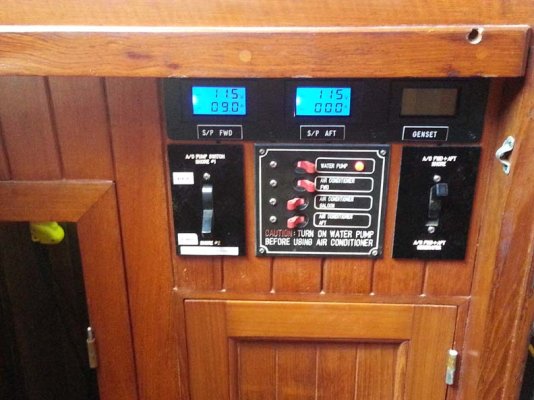Shoalwaters
Guru
- Joined
- Feb 24, 2008
- Messages
- 681
- Location
- St. Lucia, West Indies
- Vessel Name
- "Dragon Lady"
- Vessel Make
- DeFever 41
Help from the electrically-minded please:
I have twin Yanmar diesels with the factory alternators. I want to install digital amp and volt meters so that I can see what the alternators are doing - especially at start up. Meter and shunt would be mounted in plastic box adjacent to each engine.
Would the meter in the pic and link below be suitable for my purpose?
Rating is 4.5-30v and 0-100 A.
Amazon.com: DROK® Voltmeter Ammeter Volt Amp Multimeter DC 4.5-30V 100A Voltage Currenr Monitor Ampere Testing Gauge V/A Panel Meter Red/Blue Dual LED with Current Shunt Car Auto Motocycle Battery Power: Home Improvement
T.I.A.
I have twin Yanmar diesels with the factory alternators. I want to install digital amp and volt meters so that I can see what the alternators are doing - especially at start up. Meter and shunt would be mounted in plastic box adjacent to each engine.
Would the meter in the pic and link below be suitable for my purpose?
Rating is 4.5-30v and 0-100 A.
Amazon.com: DROK® Voltmeter Ammeter Volt Amp Multimeter DC 4.5-30V 100A Voltage Currenr Monitor Ampere Testing Gauge V/A Panel Meter Red/Blue Dual LED with Current Shunt Car Auto Motocycle Battery Power: Home Improvement
T.I.A.



